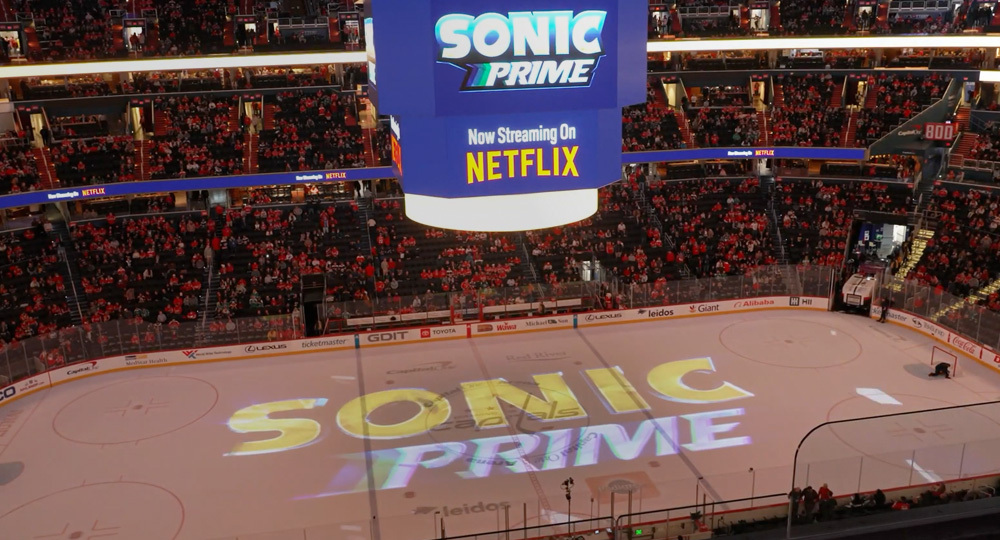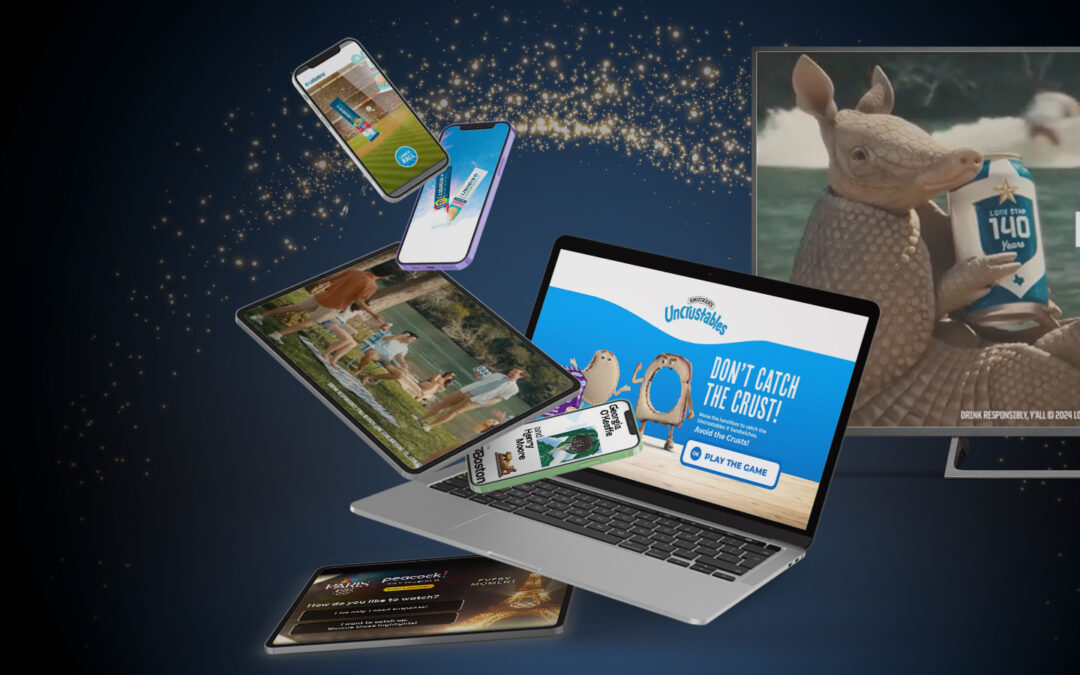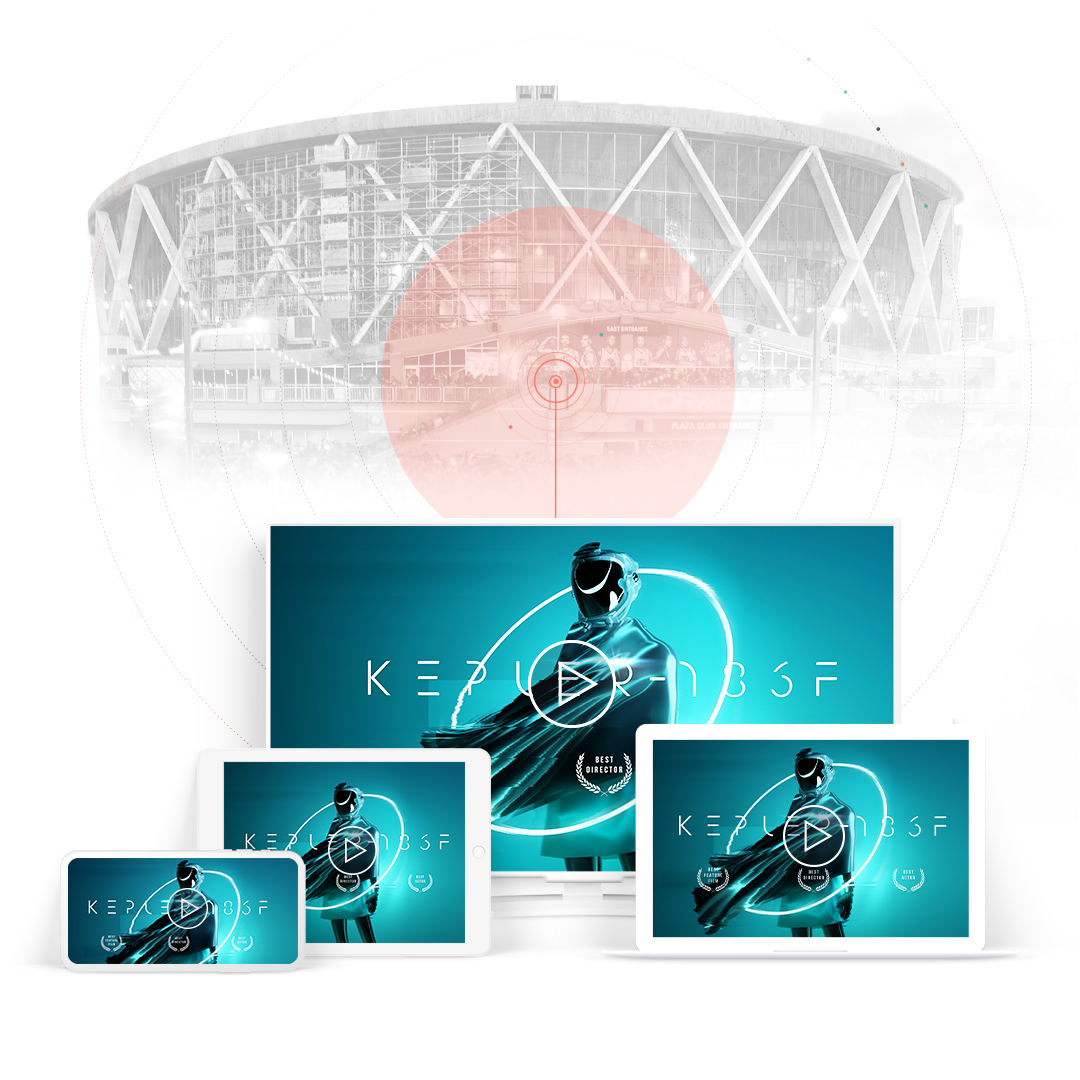How We Built It: Sonic Prime Immersive Ad for the NHL

At two NHL hockey games last month, viewers were treated to a pretty unusual sight during period breaks – an immersive experience in which the classic video game character Sonic the Hedgehog appeared to fall from the ceiling onto the ice as a promotion for Netflix’s new series “Sonic Prime.” This unique creation was built from the ground up by Infillion’s Creative Studio for the company’s InStadium live sports network, and tens of thousands of fans at Washington, D.C.’s CapitalOne Arena and Nashville’s Bridgestone Arena – plus millions of social media users – were wowed by the sensory feast.
But why did Netflix want to advertise in hockey arenas? How difficult was it to build this? Michael Colella, Infillion’s SVP and head of Creative Studio, offers a look under the hood:
What were the goals of this campaign? Why did Netflix choose NHL games for marketing?
The main goal of this campaign was awareness for Sonic Prime launching on Netflix. They wanted to make a big, visual splash for a series that has a huge potential audience – families with kids, gamers, and more. Sonic Prime introduces a new interdimensional concept called the “Shatterverse,” and as Sonic travels through it the animation mimics the shattering of glass or ice. That gave Netflix and its media agency, Mediahub USA, the idea to create a digital out-of-home brand experience that literally used ice as its medium.
How did the Creative Studio adapt quickly to learning how to build for a sports stadium?
For the ice projection, a new perspective had to be considered when designing the experience. Creating the storyboard was similar to our day-to-day business in creating multiple mocks to show a user flow, but we had to go into more detail to properly represent the concept since we were essentially creating a mini movie. This also introduced a new concept of understanding motion, pauses and transitions reinforce the story while ensuring assets and scenes were recognizable by the audience.
Another area where we had to adapt was thinking about audio to reinforce movement, character dialogue, environment sounds and background tracks. Which moments can you pause movement to highlight dialogue and action, and vice versa.
When it comes to designing for arena LEDs versus digital video on personal devices, there isn’t a tremendous learning curve involved, rather the difference is mainly that there’s a different set of specifications. The production of LEDs does require a different set of skills than what we look for and require for our core business, but luckily the Creative Studio has motion graphic resources.
What were some of the challenges you encountered along the way?
A significant technical challenge was understanding and realizing the level, attention to detail and how long rendering takes when creating 3D worlds and assets. Additionally, computing power is a factor to handle these larger assets.
More broadly, this kind of advertising is still really rare. We had been talking to some of our more trusted NHL team partners about commercializing their ice projection systems, which is uncommon. For those teams that do have them – only about a third of the teams in the league – they typically only use them for player intros, team features, entertainment, etc. and usually don’t run them with commercial content. We had to convince them that we could create a file that they could run there that would be commanding and immersive.
How long did it take to develop this activation?
You might be surprised – from start to finish, only two months. The Creative Studio is almost as fast as Sonic himself!
Want to learn more? Muse By Clio interviewed Michael to learn more about the creative process behind this innovative activation. Or, read about InStadium on our website.
Subscribe to our blog:
Related Posts:

Liquid I.V. Case Study: From Summer Slump to Record-Breaking Growth
Imagine getting 40% brand preference lift with one campaign. That’s not a typo. In a single seasonal campaign, Liquid I.V. tripled the beverage category average for brand preference — and did it during the hardest months to reach consumers. The Challenge Summer means...

The World Cup Comes Home: Why 2026 Should Be A Defining Moment for Your Brand
When the World Cup lands in North America in 2026, it will bring the world’s biggest sporting event to the forefront of American media consumption. The last time the World Cup took place, in Qatar in 2022, matches aired during early morning and midday hours in the...

The Coolest Ads We Built In 2024
2024 was a year of continuous innovation at Infillion. Our work ran the gamut from boutique ads designed for live, in-person audiences, to streamlined ad experiences built for broad consumption and easy production. In short: it was a year full of work of which we’re...
InStadium
Engage sports fans with high-impact brand experiences across America’s largest live sports network.

